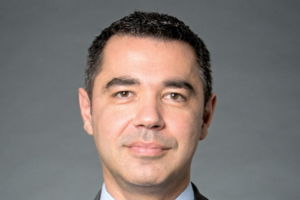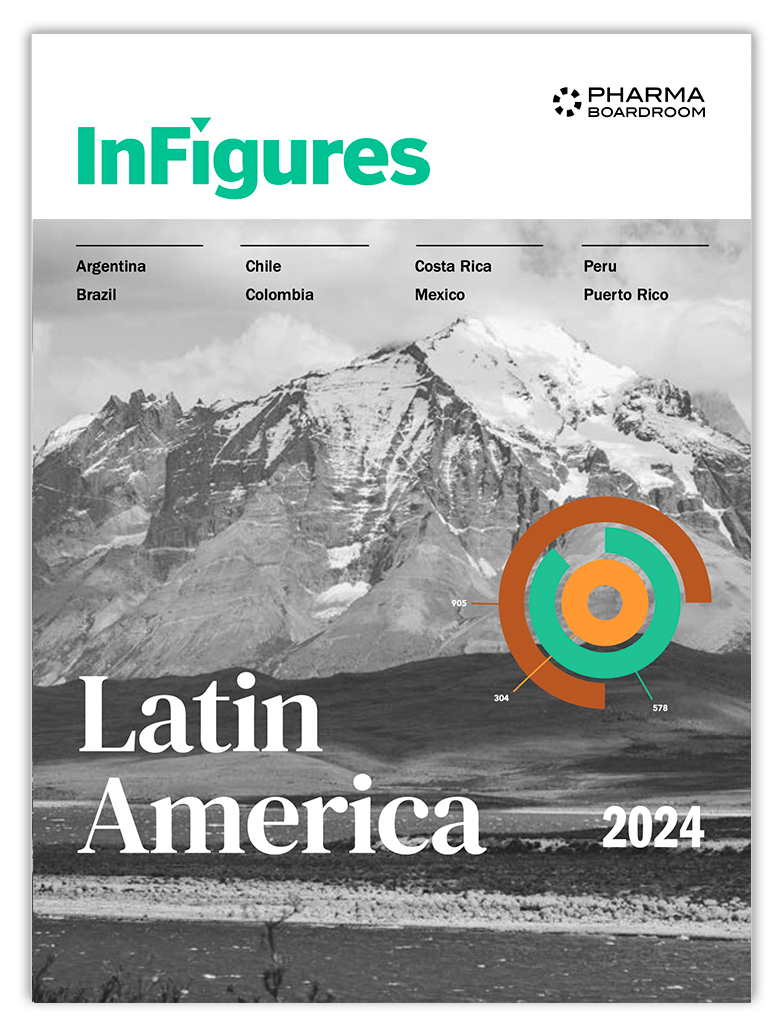Pascal Robin, country chair of Sanofi and general manager of Sanofi Pasteur for Romania and Moldova, shares his insights on the intrinsic and extrinsic factors that helped Sanofi become a market leader in Romania. He reveals how the affiliate’s well-diversified portfolio is adapted to Romanian needs and how it is contributing to steady growth. He discusses how Sanofi is an engaged and active player in Romanian healthcare, supporting the government in the implementation of sustainable change for the healthcare ecosystem.
What are the historical and strategic factors that explain Sanofi Romania’s number two market position compared to its global ranking of number six?
There are intrinsic and extrinsic factors that produced these great results. Romania is a very dynamic healthcare environment with strong economic growth. Despite this, there are still large unmet needs and the healthcare indicators—in current literature—such as access to a good standard of hospitals, access to medicine, and prevention are in need of improvement. Intrinsically, there is a need for healthcare.
Romanian healthcare is not as controlled as in more saturated markets, and this pulls the demand for medicines and therapies. The pharmaceutical industry benefits from this economic growth, but the current setup is not sustainable in the long term. There is a disparity between economic growth and the standard of care for patients in Romania.
Sanofi is in the privileged position of having one of the most diversified portfolios in the market. It is engaged in the prevention field with vaccines through Sanofi Pasteur, in specialty care therapies for rare diseases, multiple sclerosis, oncology and immunology with Sanofi Genzyme, in General Medicines which combines diabetes, cardiovascular solutions and established products, and in the consumer healthcare field with over the counter (OTC) drugs: all of which are seeing sustainable growth.
What are the challenges of having such a broad portfolio?
The drawback and challenges of each business unit are not the same, as they are specific to the markets you are investing in, as well as the level of unmet needs correlated with the level of access to innovation. This diversification interacts differently in other European countries, as the Romanian ecosystem does not follow the same agenda as the rest of Europe. However, the key challenge remains the same when you are a big corporation, which is maintaining agility and effectiveness.
Under the guidance of our new CEO Paul Hudson, Sanofi is entering a new phase of development to increase its agility and profitability. The strategic direction will be to focus R&D efforts on the growing platforms of Sanofi and the future of pharma.
What dynamic is currently shaping access to innovation for patients?
The big hurdle to overcome is the legislative framework, as it impedes existing innovations to reach Romanian patients. Globally, the future of pharma is trending towards more personalised treatments and medicines. This onsets discussion about cost-efficiency and control, investment in new capabilities, and accessibility of standard. Yet these discussions do not happen in Romania at the same pace, as patients still must wait 2.4 years on average for innovations that are already available today in other countries.
Which segments do you see as your growth drivers for the future?
Sanofi Romania sees growth in all the segments, including diabetes and CHC, which is not the case in Western Europe. The particularity of Romania is that there are still a lot of unmet needs in many areas – from self care and prevention of some infectious diseases to early diagnosis and access to innovative treatments for chronic or rare diseases.
Vaccines are an area that is expected to grow, but it will depend on the systemic decisions that have to be made in the market.
Specialty Care is an area that has a promising future, and the exciting launch of Dupixent illustrates this well. It is a promising immunology super-blockbuster in the area of monoclonal antibodies and with different indications that can treat asthma, atopic dermatitis and nasal polyposis. Dupixent is on the right track of reaching USD 10 billion in sales as its launches in the US and the first European countries have been encouraging. The product will be launched in 89 different markets, so there is growth and strong expectations that come along with that.
There is a strong OTC development in the country with double-digit growth, while in Europe that sector is stagnating.
How many products have you managed to launch in Romania during your tenure?
Throughout my tenure, the affiliate has launched dozens of products on the market. These were well adapted to the needs and epidemiology of the patients. The issue remains that the legislative environment and the political dynamics force drugs to be withdrawn rather than incentivizes laboratories to bring new products to the market.
How has the flu epidemic and rising anti-vaccination movements influenced the market?
Romania has a vaccination system that is largely dominated by public acquisition and access to vaccines free of charge at the family doctors. As of today, it is considered an area of risk for companies willing to invest in. Sanofi Pasteur is the European leader in influenza, but in Romania, the population is not benefiting from the innovation. Low prices undercut the innovative products, but nothing is done to enhance patients’ access to newer products. Hence, the positive cycle of investment is not at all visible.
There are some issues with prevention, access policies, empowering healthcare professionals and education in the field of vaccination which requires more attention. Romania is improving on these topics, but the system is not optimal. Therefore, the flu-epidemic and anti-vaccination sentiments pull the system at both extremes without having in place a proper vaccination policy. The development of such a strategy is correlated to steps that need to be taken in public policies to unlock the system.
What are some of the solutions that are proposed to unlock the current system for a better immunization of population?
In a country like Romania, there is a difficult equation to solve. You need to vaccinate more people because with an ageing population there are increasingly fewer vaccinators. Hence, alternative ways to vaccinate and how to get access to them need to be considered. This requires a critical look at the assets of the ecosystem and utilize them to enhance access.
The standard of care and facilities need to be improved in the public sector, besides, to incorporate an element of education. These health points are vital to bringing vaccinations and medicines, especially in rural areas.
Pharmacies are strong in the country and benefit from solid brand recognition. Access to vaccines can be facilitated by involving these actors, and by implementing a reimbursement policy.
The same idea applies to private clinics and healthcare providers. These are under-utilized resources that the government can capitalize on for the benefit of the general population.
Today, Romania does not vaccinate adults and the only inoculated citizens are children. Hence, there is a systemic issue of access and education.
How can Sanofi partner up with healthcare stakeholders to improve the ecosystem?
Sanofi is strongly engaged and active with the Romanian Association of Medicine Manufacturers (ARPIM), as healthcare task-force leader with the French Chamber of Commerce (CCIFER) and involved with the Coalition for the Development of Romania (CDR) to partner with the Ministry of Health and the authorities in finding new solutions to systemic issues.
All stakeholders agree that there is a need for change, but how to approach it is the debate. At the core is the underfinancing of the healthcare system and how to bring it to the European average, which is around 8-9 percent of the GDP. This entails implementing a long-term strategy, finding solutions in stimulating the private healthcare contributions and enhancing collaborations between the private and public sector. Through this prism, clawback is not a sustainable solution but is a symptom of inadequate and unsustainable policies.
What have been your proudest achievements while leading this affiliate?
I am happy to say that we have brought innovation in several fields. Diabetes has seen the launch of Suliqua® which is particularly relevant for people whose type 2 diabetes is uncontrolled, despite using basal insulin or oral treatment. For improving the life quality of patients with multiple sclerosis, we brought Lemtrada and for advanced medullary thyroid cancer we have made Caprelsa available. We incited the Government to trigger prevention of influenza by using tetravalent vaccines. We have also launched new self-care solutions adapted to the customers’ modern life and needs: MagneVie Stress Resist for stress management and Novanight for healthy sleep hygiene.
Besides our responsibility of bringing science and innovation closer to Romanian patients and medical communities, we are strongly committed to be a responsible citizen and employer. I am very proud of the 4 years of partnership and volunteering of Sanofi Romania with NGOs like MagiCamp, SOS Children’s Villages and Romanian Red Cross in the benefit of children’s health and education. In addition, we are strongly committed to inspire and support our employees in their career journeys according to our values: Teamwork, Respect, Courage and Integrity. Every day, our approximatively 250 employees work hard to offer timely access to high-quality medicines and healthcare solutions that are helping millions of Romanians to have a better life.
What would you like to achieve in the next one to three years?
Sanofi is continuously investing, growing and bringing innovations to Romania. Sanofi has promising innovations in various fields with a solid ambition to bring them to the patients. Rare blood disorders, influenza, meningitis and familial hypercholesterolemia will have new treatments. Sanofi’s ambition is to be active in shaping the future development of healthcare.
What would be your advice to a fresh GM coming to Romania?
Witness the reality of the healthcare system by going to the field. Once you see it for yourself, it will motivate you differently and push you to do more for the Romanian patients.







